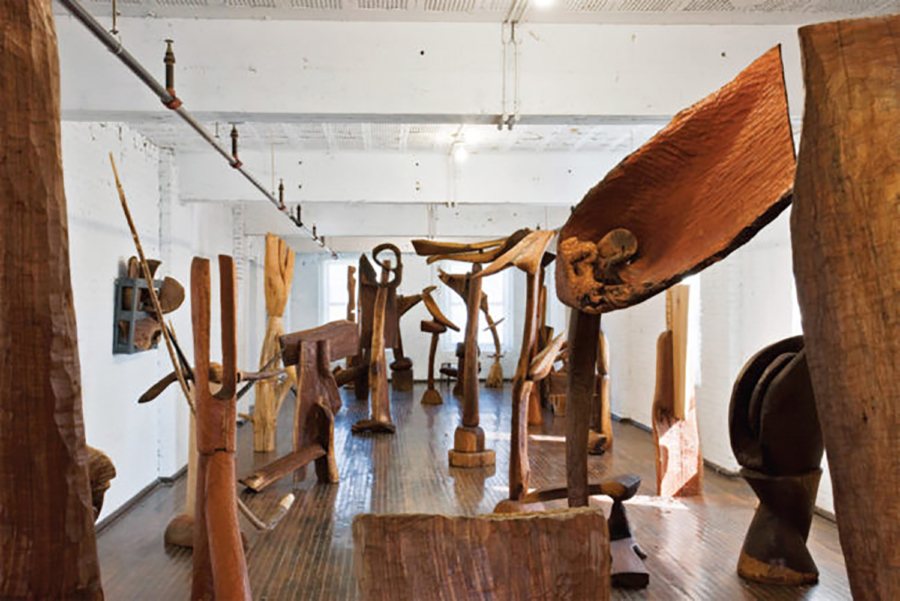November 13, 2009
Download as PDF
View on Art in America
The work of sculptor Thaddeus Mosley might seem derivative at first glance: the influences of Noguchi, Brancusi, Giacometti and African art are evident. Yet closer consideration of his prolific career reframes the work, and Mosley emerges as an artist’s artist driven obsessively to explore the endless permutations of his chosen medium.
This exhibition consisted of a re-creation of Mosley’s studio and 78 totemic, predominantly wood, hand-carved sculptures, most created between 1996 and 2009. Some stand over 8 feet tall, and some have components of steel, stone or found objects. The sheer volume of work is remarkable, all the more considering the circumstances of its making: Mosley’s studio is in the basement of his museumlike home, and both are crammed with his art and collections, including enormous panels wallpapered with exhibition invitations spanning decades.

View of Thaddeus Mosley’s exhibition “Sculpture (Studio Home),” 2009; at the Mattress Factory
Born in 1926, Mosley is a self-trained African-American artist who studied English and journalism but spent most of his adult life working for the post office. He did not begin making art until his 30s. In the early ’60s he was at the forefront of a movement to establish black art and artists in Pittsburgh. Since the mid-1960s he has exhibited frequently, although making few sales, and he had a retrospective at the Carnegie Museum of Art in 1997.
Elements of Mosley’s sculpture are akin to Brancusi’s. Alien Bust (2006), for example, a single oval-shaped form atop a pedestal, is distinctly Danaïde-esque, and many tall works are made of smaller stacked parts. Necessity partially explains the works’ modular construction: most of the wood is scavenged, and there is a limit to what will fit into Mosley’s vehicle and basement.
Despite the influence of modernist predecessors, there is a refreshing inventiveness to Mosley’s work. In Bark Forms #1-4 (2006), waist-high curved tendrils of bark nest together; in Consequence of Roots (2003), an organic clump of roots seems to defy gravity, hanging sidelong off a walnut totem; and a carved walnut boat seems to push through a metal grid, like potatoes through a masher, in Transporter of Fire (1998). These works are all unified by Mosley’s signature rhythmic chisel marks, which pattern the surfaces, and he is clearly inspired by the initial form of the raw materials. Each of the 78 exceptional works is proof of his inexhaustible commitment to one medium, and evidence that imitation does not preclude brilliance.



